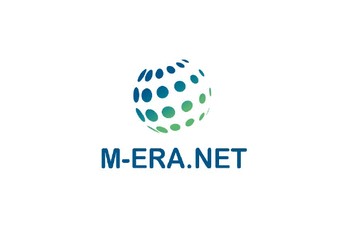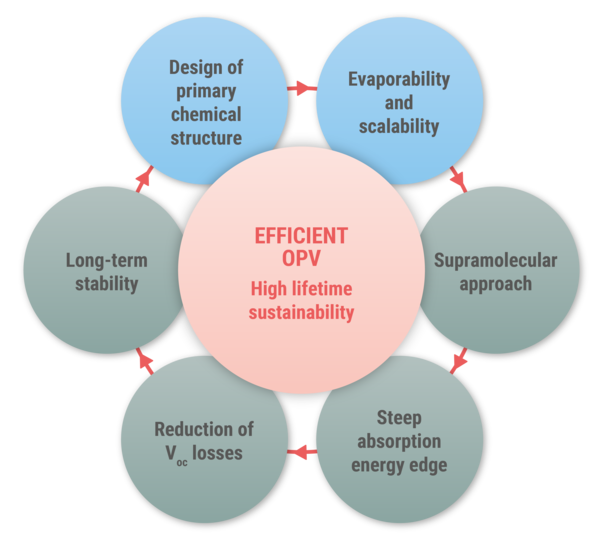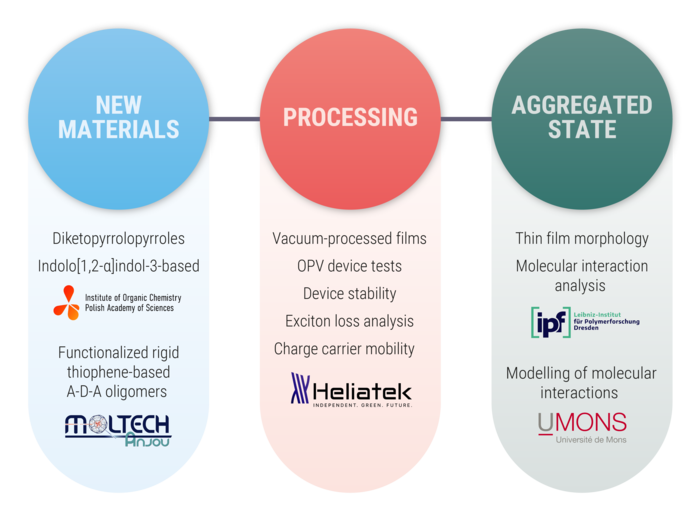Project description
Steep absorption with supramolecular self-assembled functional dyes for vacuum-deposited organic solar cells

Since Heliatek’s start of volume production in 2022, vacuum processed Organic PhotoVoltaics (OPV) is a new way to produce PV, for use on roofs and facades. OPV is independent of imports from critical origin. It uses no rare metals, toxic substances, or solvents. Low temperature processing leads to short energy payback time.
Yet, there is a requirement to increase efficiency to better compete with other PV technologies. STEEP UP aims for increased cell efficiency by reduced voltage loss, energetic alignment and steepness of the absorption spectra.
Focus is on evaporable absorbers: indolo[1,2-a]indol-3-ones, diketopyrrolopyrroles, and structurally blocked oligomers. Special emphasis will be put on simple structure, scalability and stability of the materials. Aim is 1% efficiency increase in OPV, and 20 years lifetime. This little increase generates a big impact: Converting a 10% solar foil product to 11% by improved materials generates additional 10 MWp electrical power production capacity per year, without significant extra cost.

Objectives
- Design of small π-conjugated molecules with controlled frontier energy levels and unprecedentedly steep low-energy-edge guided by computational modelling
- Identification of property-structure relationships between (J-like) molecular aggregation and changes in the lineshape of the absorption bands going from solution to the solid state
- Demonstration of the benefit of (J-like) aggregate formation in thin films: Optimal absorption lineshape together with enhanced (charge and exciton) transport properties
- Selection of new production-relevant materials for OPV test devices considering parameters such as evaporability, long-term stability, and scalability
- Creating and characterizing sub-bandgap trap-free OPV devices using affordable, tunable, and stable molecular dyes
